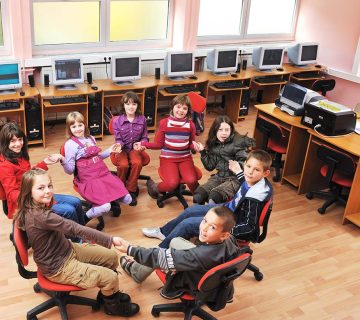In early childhood, the way children perceive and respond to challenges and failures plays a crucial role in shaping their self-confidence and motivation. The concept of “Growth Mindset”, introduced by Carol Dweck, is based on the belief that abilities and intelligence can be developed through effort, learning, and perseverance—unlike a fixed mindset, which views abilities as innate and unchangeable.
Resilience refers to the ability to recover quickly from difficulties and stress. For children aged 7 to 12, cultivating these two skills can significantly enhance their success not only in academics but also in their personal and social lives.
When a child learns that mistakes are a natural part of the learning process, they stop fearing failure and begin seeking new ways to solve problems. This mindset transforms challenges into opportunities for growth and learning.
Research has shown that children with a growth mindset:
Persist longer when faced with difficult tasks
Achieve higher academic performance
Develop stronger self-regulation skills
Are better at managing negative emotions such as frustration or anger
By embracing this approach, children become more resilient, adaptive, and empowered to navigate both educational and life challenges with confidence.
Resilience complements a growth mindset, as children with high resilience recover quickly after facing failure or disappointment and continue their efforts with renewed energy. This trait is directly related to mental health and reduces the risk of anxiety and depression. In the school environment, resilient children are less affected by social pressure and form more stable relationships within peer groups.
To cultivate a growth mindset and resilience in children, practical and interactive methods should be used:
Encourage the process instead of focusing on the outcome: Rather than only emphasizing the grade or final result, the process of the activity, the efforts made, and the creative solutions should be praised.
Structured feedback: When giving feedback, emphasize the positive points and provide specific suggestions for improvement. Show the child that their efforts are noticed and appreciated.
Storytelling and real-life examples: Introduce successful individuals who have achieved their goals through effort and perseverance; these stories can include athletes, scientists, or artists.
Challenging games: Use puzzles, brain games, and team activities that require cooperation and critical thinking. Experiencing success in these games leads to increased self-esteem and confidence.
Teaching coping skills: Simple techniques such as deep breathing, short meditations, and positive self-talk that help the child stay calm during stressful moments.
In addition, parents and teachers should themselves model behaviors that serve as positive examples for children. When adults remain calm in the face of challenges and learn from their mistakes, children adopt this behavioral style as well. The importance of creating a supportive environment at home and school is undeniable—an atmosphere where mistakes are accepted and turned into learning opportunities.
A practical example could be a “Challenge Day” at school. On this day, children are placed in small groups and faced with a series of difficult problems that require critical thinking, collaboration, and perseverance to solve. After each stage, the teacher or facilitator holds a short session to review the children’s methods and emotions, helping to highlight the strengths and weaknesses of the process.
Ultimately, fostering a growth mindset and resilience is a continuous, long-term process that requires support and repetition. By combining group and individual activities, positive feedback, and inspiring stories, children can be guided toward a path of success in which not only academic goals but also life and emotional skills are enhanced.
Digital educational technologies can also play a significant role in this process. Adaptive learning platforms that provide immediate feedback help children identify their mistakes in the moment and discover new ways to improve. Interactive story-based applications also promote a growth mindset by presenting challenging narratives in which children can experience different outcomes based on their choices and recognize the value of their effort.
To measure progress in this area, teachers can use informal assessment tools such as daily journals or by observing behavioral changes in children’s interactions. Signs of increased engagement, reduced avoidance of responsibilities, and improved problem-solving abilities are strong indicators of the positive impact of activities aimed at fostering a growth mindset and resilience.
In today’s society, where rapid technological changes and the need for adaptive skills are increasingly evident, nurturing these abilities in children aged 7 to 12 is a vital investment in the future of communities. Children who grow up with a growth mindset and strong resilience are not only capable of overcoming academic challenges, but also enter adulthood with the confidence and flexibility needed to plan for success in various life environments.







